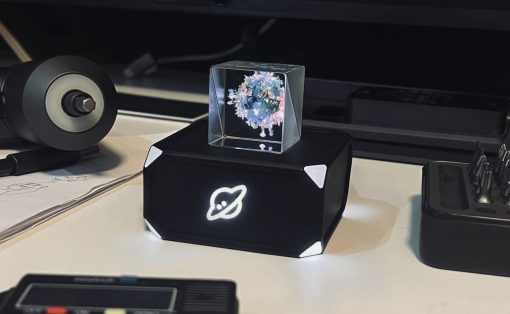
Resting Reefs is a system of artificial reefs that are 3D-printed from the cremated ashes of passed-over loved ones.
Spreading the ashes of relatives who’ve passed over across the ocean is a beautiful way to memorialize loved ones. While the symbolism behind it is the point of tossing your loved ones’ ashes into the wind, Royal College of Art graduates Louise Lenborg Skajem and Aura Elena Murillo Pérez developed a means to still memorialize our passed-over loved ones while regenerating endangered ecosystems in the process. Resting Reef, a line of artificial reefs made from cremated ashes using 3D technologies, marks the culmination of Lenborg Skajem’s and Murillo Pérez’s studies at RCA.
Designers: Louise Lenborg Skajem and Aura Elena Murillo Pérez


Working with the remains of deceased animals instead of human ashes, the design duo combined animal bones with pulverized oyster shells and a binder to create a composite to be 3D-printed into stippled mounds that resemble underwater reefs. While the designers are still testing their formulas, “it will contain a binder like a low-carbon cement suitable for marine environments.”


The 3D-printed mounds offer ideal growing conditions for oysters by mimicking the form and natural growing scheme of stromatolite reefs, which are formed from microorganisms like blue-green algae. Forming the cremated ashes into solid reef mounds also allows surviving family members to visit their loved ones’ eternal resting places.


Built to prevent natural and human-induced erosion, protect shorelines from the natural elements, and regenerate native biodiversity, Resting Reef transforms traditional funeral services into preservational burial methods that protect marine life. Putting the customizable process in their own words, the design duo explains, “The way they grow is in layers, which is very similar to how oyster shells grow. We are using 3D printers to bio-mimic similar layers and ridges that are ideal for small marine organisms to attach to.”







